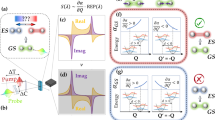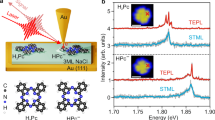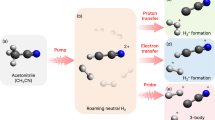Abstract
IN a note recently communicated to NATURE it was pointed out that the Raman effect in triatomic molecules having a linear model could be explained on the assumption of a fundamental mode of vibration along the line joining the three nuclei of the molecules. Such vibrations take place along the direction of propagation of the radiation and behave as optically inactive ones and are not manifested in the near infra-red bands. The case of carbon dioxide was discussed on this basis.
This is a preview of subscription content, access via your institution
Access options
Subscribe to this journal
Receive 51 print issues and online access
$199.00 per year
only $3.90 per issue
Buy this article
- Purchase on SpringerLink
- Instant access to full article PDF
Prices may be subject to local taxes which are calculated during checkout
Similar content being viewed by others
Author information
Authors and Affiliations
Rights and permissions
About this article
Cite this article
GHOSH, P., MAHANTI, P. Raman Effect in Gases and Liquids. Nature 124, 230 (1929). https://doi.org/10.1038/124230b0
Issue date:
DOI: https://doi.org/10.1038/124230b0



